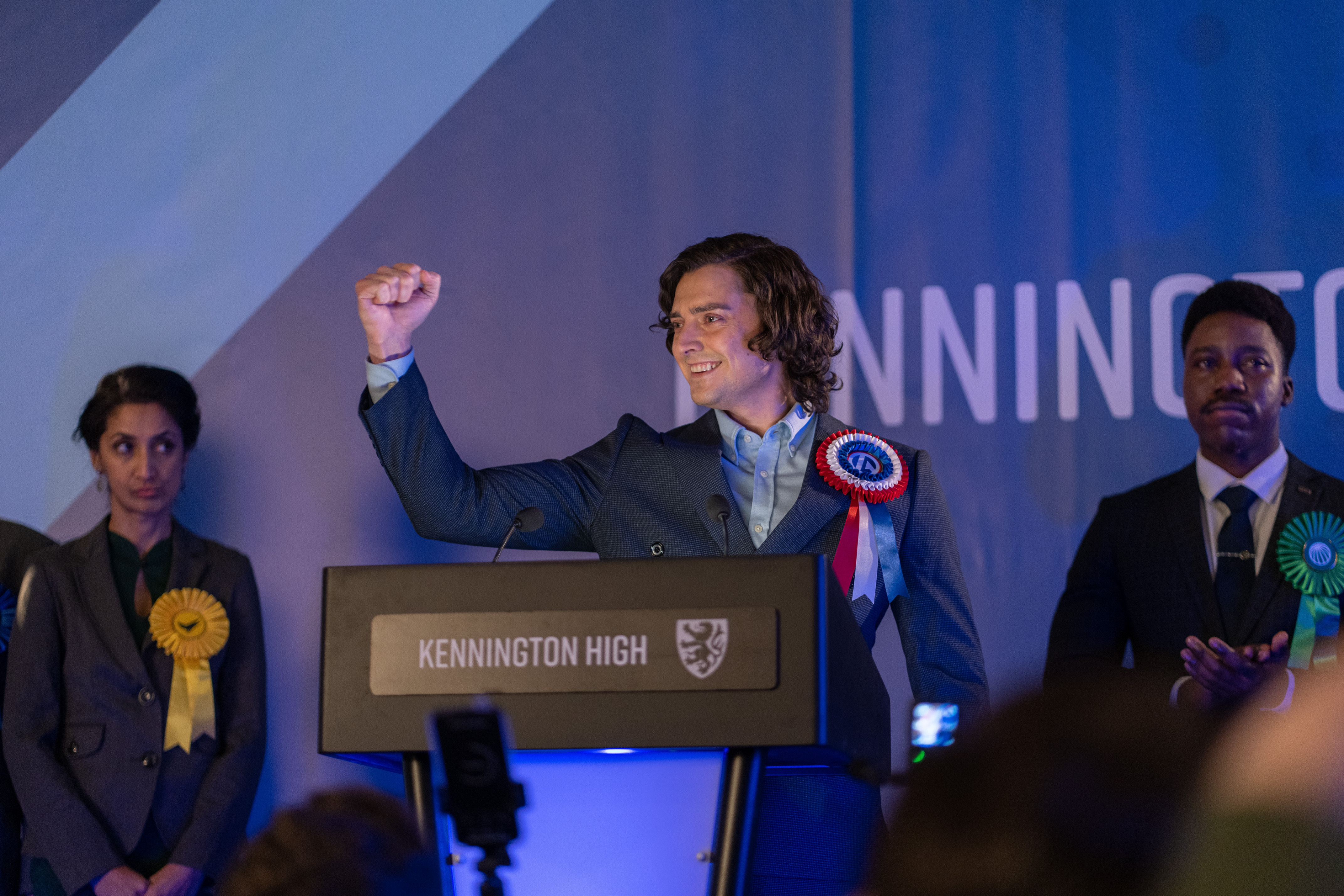With very rare exceptions, Doctor Who is often absolutely terrifying to children and anything but to adults. And yet, last week’s episode ’73 Yards’ unsettled me in a way that this show hasn’t done for many years. The episode has been a hit with fans and critics, winning predominantly five star reviews in the press (oh hey, here’s ours) and 9/10 ratings on the main Who forum, Gallifrey Base – a far rarer occurrence than you might expect given the show’s hyper-critical fanbase.
And yet, for some, ’73 Yards’ steadfast refusal to explain itself has proven infuriating, maddening, even a bit offensive. Some are angry that we never find out what the mysterious woman stalking Ruby Sunday is saying, while others are frustrated by the episode’s opaque ending. And that’s fine – you can’t please everyone all of the time. Instalments like this are, by their very nature, going to be more divisive than, say, an episode where the Doctor cracks a few jokes and foils a Dalek invasion.
“She looks like what she is”

Part of the issue, I believe, is that there’s been a fundamental misconception in some quarters of what the episode is trying to achieve.
There are plenty of mystery shows on TV, many that offer puzzles to be solved by the attentive viewer – insert whatever your favorite whodunnit is here. Others take the mystery box approach, where a show with a rich and usually hidden mythology will tease out answers to long-standing mysteries, but often use those same answers to pose more questions – yes, we’re talking about Lost here (although, by the end, that show had actually answered almost everything of importance, and no they weren’t dead all along, pay attention).
However, neither of those approaches really comes close to what’s going on in ’73 Yards’. Instead, the episode reminded me of a far older tradition: the ghost story.
A few years back, the British Library started publishing a series of books titled the ‘British Library Tales of the Weird.’ These cute little paperback volumes collect long out-of-print strange stories by writers like Algernon Blackwood, Arthur Machen, William Hope Hodgson, and many more. The stories are often brilliant and utterly baffling, full of uncanny imagery and operating on an inconsistent kind of logic that defies rational explanation. To me, that’s what ’73 Yards’ most recalls, along with the films in the BBC’s ‘A Ghost Story for Christmas’ strand, Mark Jenkins’ recent Enys Men, and David Lynch’s masterpiece, Twin Peaks: The Return.

In ’73 Yards’ there seems to be a loose pattern of cause and effect that takes place from the moment the Doctor and Ruby step out of the TARDIS. In brief: the Doctor disturbs the faerie ring causing him to vanish and Ruby to be haunted by an apparition until she finally seems to merge with it at the end of her life. At that point, whatever the entity is (Mad Jack, perhaps?) appears to grant her the chance to put things right by preventing the Doctor’s clumsiness, and the spell is broken. We’re never allowed to fully understand how this works, though, or the precise nature of the relationship between Ruby and the apparition.
Many have read the ending as implying that the woman was Ruby all along, to which we can only say: maybe? That doesn’t seem quite right, given that elderly Ruby and the apparition are played by different actors (Amanda Walker and Hilary Hobson, respectively) and don’t really look the same, but honestly, who knows?
Semper distans

We’re used to long-running series following certain rules, but ’73 Yards’ is intent on breaking them from the start – right down to jettisoning the title sequence and theme music, which has been spirited away with the faeries. The episode repeatedly offers a recognizable pattern (the creepy village pub full of weirdos) before disrupting it (the locals are actually normal people, they’re just fed up of the English and their racist assumptions). Ruby thinks she’s figured everything out when she decides to take on Roger ap Gwilliam and, for a while, the episode reverts to a familiar sci-fi format: the parallel world. But as that absolutely crushing “40 years later” card proves, she’s completely, laughably wrong. Maybe Ruby saved the world in taking Gwilliam down, maybe she made absolutely no difference whatsoever – we’ll never know. She’s simply conforming to the message that Kate Lethbridge-Stewart spells out earlier in the episode: “That’s what we do, all of us. We see something inexplicable and invent the rules to make it work.” The apparition always remains out of focus.
So no, you will never know what the woman is saying throughout ’73 Yards’ or why it makes people run away from Ruby – and that’s a good thing. The episode’s primary concern is in putting you in Ruby’s shoes and making you feel as she does: confused, annoyed, upset, afraid, and alone. “Everyone has abandoned me my whole life,” the elderly Ruby says on her final visit to the TARDIS – a stark, sad statement that hits as hard as it does because the circumstances of her life have been so cruelly inexplicable.
’73 Yards’ is a Doctor Who episode that fully embraces the show’s new remit to tell supernatural stories and actually grapples with just how frightening that might be, rather than simply going, “We have singing goblins now!” It presents you with the best kind of mystery – a truly unsolvable one – and leaves it to your imagination to fill in the blanks.
Doctor Who is streaming weekly on BBC iPlayer in the UK and Disney Plus in the US. For more, check out the Doctor Who release schedule.





















+ There are no comments
Add yours